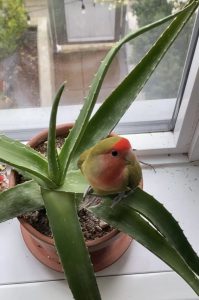The Popol Vuh was a great book to read, offering insights on the mayan gods and an interpretation from a “mayans perspective” of the creation of life on earth. I feel that the second half of the book described more about the importance of animals, along with the gods’ definition of what makes humans “human”. In the readers companion, we see that the author offers their own interpretation of the mayan myths and reflects on how some of the text contrasts to the bible. I found it rather interesting that this portion of the text reverts back to being in thick paragraphs, main thoughts separated by a little design for the paragraph break, in contrast to the single and spaced out lines in the earlier parts.
The animals played important roles with the twins’ ability to succeed, from interfering with their chore work, helping them get through the trials, to building a fake head for Hunahpu. Community and teamwork appear to be centered around the animals, where they tend to work together in a lot of the scenarios. Such as the animals who came to deliver the message from Xibalba to the twins. Although they each tried to eat each other, in the end if they hadn’t done so the message might not have reached the twins in time. It also felt that this scenario also demonstrated the animals to be easily persuaded by food, a primitive instinct for survival or desire. This is shown through the louse and the frog, giving rise to the development of a food chain. There is also the event when the twins give the jaguars bones to eat in the Jaguar house trial so they would not eat them.
I found it particularly interesting on page 124 how the text was set up to describe the animals who participated in making the fields full of trees and bushes. It looks as though each line was like a stanza in a poem, carefully matching the animals mentioned by their appearances or behaviour, such as the “puma and the jaguar” and “the deer and the rabbit”. Similar formatting can be seen in later pages in part 3, listing out descriptions that would be deemed as lengthy if it were kept in a single paragraph. Perhaps this was done to not only make the text easier to read and at a faster pace, but to create some voice inside the readers heads as they read the lines. I feel when words are listed apart in a story there is more emphasis given to the subjects mentioned, with a unique serious narrative.
Another thing I found rather compelling was the mention of why falcons eat snakes and the reason for the whipowhirl’s gaping mouth. I feel like the narrator found these random bits of information stand out and necessary to write down as part of what led to the creation of life they now knew. Furthermore the way the facts were told made the stories seem more of myth, where the whipowhirls transformation felt something out of a fantasy.
Going back to my first blog entry for Popol Vuh, I mention how the gods or demigods have a strong sense of pride that lead to their demise. To complement this, they also lacked na’wik, the “capacity to notice, understand, and perceive”. This is the human side, differentiating humans from gods and the first creation of wooden humans. I notice that this doesn’t imply that this is what is defined as “good” traits but what just is according to the book. The only thing this influences is their judgment, to which the gods decide to keep the humans eyes shrouded so they don’t see all like a god. This makes me wonder if it is something that should not be questioned since this is a trait that the gods designed humans to have and without it they would be inhuman or too much of it deemed as something as a god.
